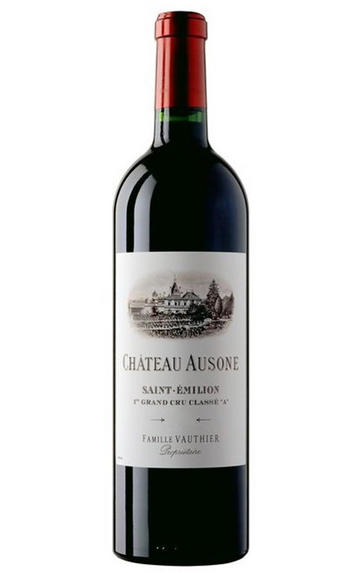
2009 Château Ausone, St Emilion, Bordeaux
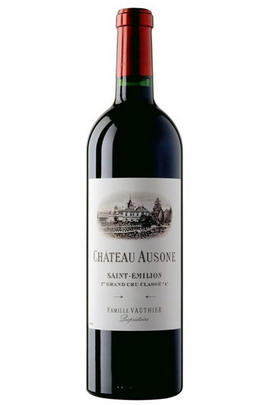
Critics reviews
The 2009 Ausone has a sumptuous bouquet with pure blackberry, raspberry, rose petal and orange blossom aromas. The wine is beautifully defined blossoms with aeration. It becomes very liquorice and menthol-like after 10 minutes’ aeration. The palate is medium-bodied with fine tannin. It is not a powerful 2009 and it feels sleek and quite tensile. Pure red fruit linger in the mouth with a very deft, almost understated finish. So elegant, so Ausone. Tasted blind at Farr Vintners’ 2009 Bordeaux tasting.
Drink 2021 - 2050
Neal Martin, Vinous.com (March 2019)
A 55/45 blend of Cabernet Franc and Merlot; cropped at 27 hectoliters per hectare; pH 3.56; 14.5% alcohol; 100% new oak.
Bright, saturated ruby-red. Very cabernet franc- and limestone-driven on the nose, offering enticing scents of red berries, cocoa, spicy minerals and violet. Impressively intense flavours of red and dark berries are complicated by bitter chocolate and minerals. This serious, weighty blockbuster is given great verve by strong, mouthwatering acidity. Substantial but even tannins saturate the palate, and a captivating note of cedar emerges with air. This wine is going to require a lot of time in the cellar but is starting its life with outstanding balance and class.
Ian D'Agata, Vinous.com (May 2010)
Tasted blind.
Medium-concentration crimson. Sweet and almost coconut oaky nose. Thick, sweet and attention-grabbing but it does lack a bit of freshness. More to be marvelled at than to refresh. Lots of alcohol.
Drink 2017 - 2035
Jancis Robinson MW, JancisRobinson.com (March 2019)
A masterpiece in the making, proprietor Alain Vauthiers 2009 Ausone boasts a dense purple color along with notes of powdered chalk, crushed rocks and wild blue, red and black fruits. Extravagantly rich with great minerality, precision and freshness as well as a voluptuous texture (unusual for a baby Ausone), this is an extraordinary wine. Sadly, there are fewer than 1,200 cases ... for the world.
Drink 2020 - 2060+
Robert M. Parker, Jr., Wine Advocate (December 2011)
Incredible nose of currants and blueberries. Flowers too. Licorice. Such purity on the nose of Cabernet Franc. Full body, incredible structure, with fabulous tannins and a long, long finish. Built out of stone. The prefect Ausone.
Try after 2022
James Suckling, JamesSuckling.com (March 2012)
Bright ruby-red. Serious medicinal reserve to the aromas of iron, violet and coconutty oak. A real mineral bath on the palate, with outstanding concentration and energy to the flavours of dark berries and flowers. Hiding more than it's showing today and is destined for three or four decades of improvement in bottle. The remarkably palate-staining finish features an outstanding tannic spine and grip and a great lift for such a big wine. A knockout, and likely to be a Bordeaux monument.
Stephen Tanzer, Vinous.com (July 2012)
About this WINE
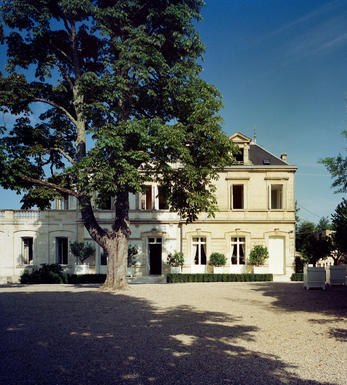
Château Ausone
Château Ausone is a wine estate in St Emilion on the Right Bank of Bordeaux. It takes its name from the poet Ausonius, who is thought to have owned a villa where the estate stands today – just outside the medieval village of St Emilion. Ausone’s vineyards sit atop St Emilion’s limestone plateau and extend in terraces down the côtes. There are just over six hectares of vines planted today, mostly Cabernet Franc along with Merlot. The team practice organic and biodynamic viticulture though without certification.
The estate belongs to the Vauthier family, led by Alain Vauthier and his children, Pauline and Edouard. In 1955, Ausone was ranked at the very top of the St Emilion classification – as Premier Grand Cru Classé A – alongside Château Cheval Blanc. In 2021, both Ausone and Cheval Blanc announced that they were voluntarily withdrawing from the classification.
Ausone is known for its structured, long-lived wines. A second wine, Chapelle d’Ausone, was introduced in the 1990s. The Vauthier family also own a number of other properties nearby in St Emilion, including Château Moulin Saint-Georges, Château La Clotte and Château de Fonbel.
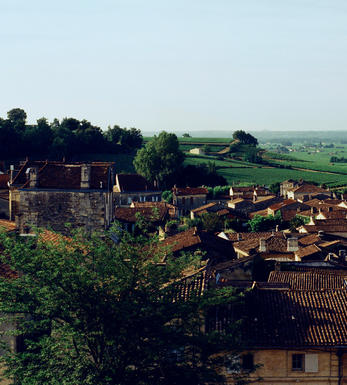
St Émilion
St Émilion is one of Bordeaux's largest producing appellations, producing more wine than Listrac, Moulis, St Estèphe, Pauillac, St Julien and Margaux put together. St Emilion has been producing wine for longer than the Médoc but its lack of accessibility to Bordeaux's port and market-restricted exports to mainland Europe meant the region initially did not enjoy the commercial success that funded the great châteaux of the Left Bank.
St Émilion itself is the prettiest of Bordeaux's wine towns, perched on top of the steep limestone slopes upon which many of the region's finest vineyards are situated. However, more than half of the appellation's vineyards lie on the plain between the town and the Dordogne River on sandy, alluvial soils with a sprinkling of gravel.
Further diversity is added by a small, complex gravel bed to the north-east of the region on the border with Pomerol. Atypically for St Émilion, this allows Cabernet Franc and, to a lesser extent, Cabernet Sauvignon to prosper and defines the personality of the great wines such as Ch. Cheval Blanc.
In the early 1990s there was an explosion of experimentation and evolution, leading to the rise of the garagistes, producers of deeply-concentrated wines made in very small quantities and offered at high prices. The appellation is also surrounded by four satellite appellations, Montagne, Lussac, Puisseguin and St. Georges, which enjoy a family similarity but not the complexity of the best wines.
St Émilion was first officially classified in 1954, and is the most meritocratic classification system in Bordeaux, as it is regularly amended. The most recent revision of the classification was in 2012
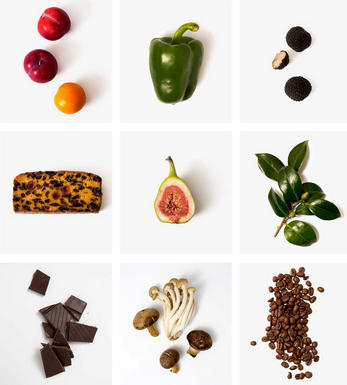
Merlot
The most widely planted grape in Bordeaux and a grape that has been on a relentless expansion drive throughout the world in the last decade. Merlot is adaptable to most soils and is relatively simple to cultivate. It is a vigorous naturally high yielding grape that requires savage pruning - over-cropped Merlot-based wines are dilute and bland. It is also vital to pick at optimum ripeness as Merlot can quickly lose its varietal characteristics if harvested overripe.
In St.Emilion and Pomerol it withstands the moist clay rich soils far better than Cabernet grapes, and at it best produces opulently rich, plummy clarets with succulent fruitcake-like nuances. Le Pin, Pétrus and Clinet are examples of hedonistically rich Merlot wines at their very best. It also plays a key supporting role in filling out the middle palate of the Cabernet-dominated wines of the Médoc and Graves.
Merlot is now grown in virtually all wine growing countries and is particularly successful in California, Chile and Northern Italy.


Buying options
Add to wishlist
Description
Deep, sensuous blackberry aromas announce the 2009 Ch. Ausone, followed by a seductive, creamy cassis palate dripping with a high level of superbly-crafted tannins that just melt on the tongue. A much darker wine than its junior siblings, this has all the properties of a true Grand Vin that will last for many, many years – and yet the contradiction is that it is still delicious right now! Concentrated, ripe but not confected in the least, this is silky smooth with a mineral presence on the finish worthy of its status. Spellbinding.
Berry Bros. & Rudd
wine at a glance
Delivery and quality guarantee